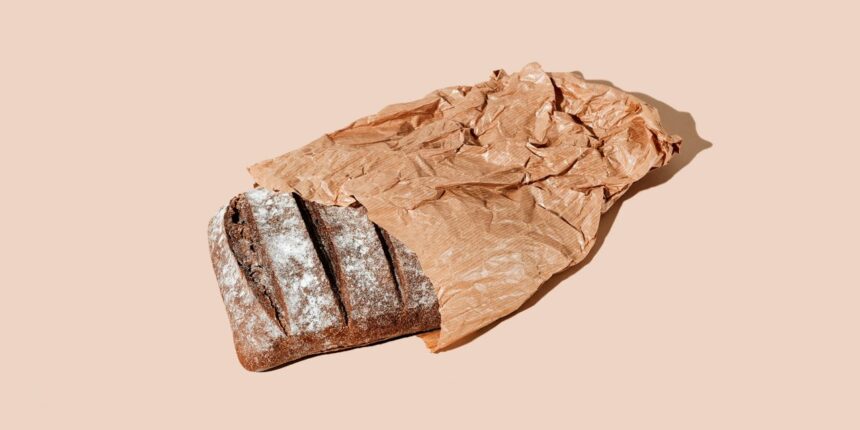You’re all ready to eat your sandwich when you notice the golden brown of your roll now has a…decidedly green tint. So you wonder: Is it safe to eat moldy bread—you’d cut off the bad stuff, of course—or do you need to rethink lunch?
It’s an unfortunately all-too-common question, because, well, mold has a way of sneaking up on you. Within the span of a few days, an innocuous speck can turn a loaf of bread from prime sandwich material into a hideous mass of blue-green fuzz—an appetite-killing sight if ever there was one. “Bread is a pantry staple, but it’s also a prime target for mold, which raises both quality and safety concerns,” Darin Detwiler, PhD, a food safety expert and associate teaching professor at Northeastern University’s College of Professional Studies, tells SELF.
So, is it safe to toss the fuzzed-up slices but eat the rest? Or do you need to trash the entire loaf? And what’s the best way to stop bread from molding so fast in the first place? Read on to find out more about all things mold, because this is your best shot at making sure your sandwich plans are never foiled by fungi again.
Why is bread such a mold magnet?
“As simple as bread may seem, it is practically a dream food for mold,” Dr. Detwiler says. Soft, a little moist, neutral in pH, rich in sugars and starches, and typically stored at room temp, bread makes the perfect incubator for those sly little spores, according to Dr. Detwiler. And thanks to their ingredient makeup, some types are more susceptible than others.
What’s more, mold is inescapable. Even though it isn’t always visible with the naked eye, it’s all around us, lurking in the soil, floating in the air, and even entering your airways (BRB, hopping in the shower). Whenever you take bread out of the bag, you expose it to the surrounding environment, offering an opportunity for drifting spores to settle on the surface. Under the right conditions (think warmth and humidity), those spores will then start to proliferate—“almost invisibly at first,” Dr. Detwiler says. As the mold colony grows, you’ll see those familiar fuzzy spots starting to form.
Of the more than 1.5 million species of mold estimated to exist, a few are especially likely to blame for your spoiled slice. “One of the most common culprits is Rhizopus stolonifer,’” Dr. Detwiler says. Better known as “black bread mold,” R. stolonifer starts off as fuzzy white spots that then turn gray or black, hence its name, according to Dr. Detwiler. Other top suspects include Penicillium molds, which often manifest as blue-green patches, and Cladosporium molds, which are olive green to black in color. In some cases, Aspergillus molds (white, yellow, green, brown, or black) can also grow on bread.
Is it ever safe to eat moldy bread?
Unfortunately, the answer is a hard no. By the first hint of discoloration on any slice, your entire loaf is a goner. “Once mold forms, just throw it out,” Martin Bucknavage, MS, a senior food safety extension associate at Pennsylvania State University, tells SELF. “It’s just not worth it.”
Read the full article here



